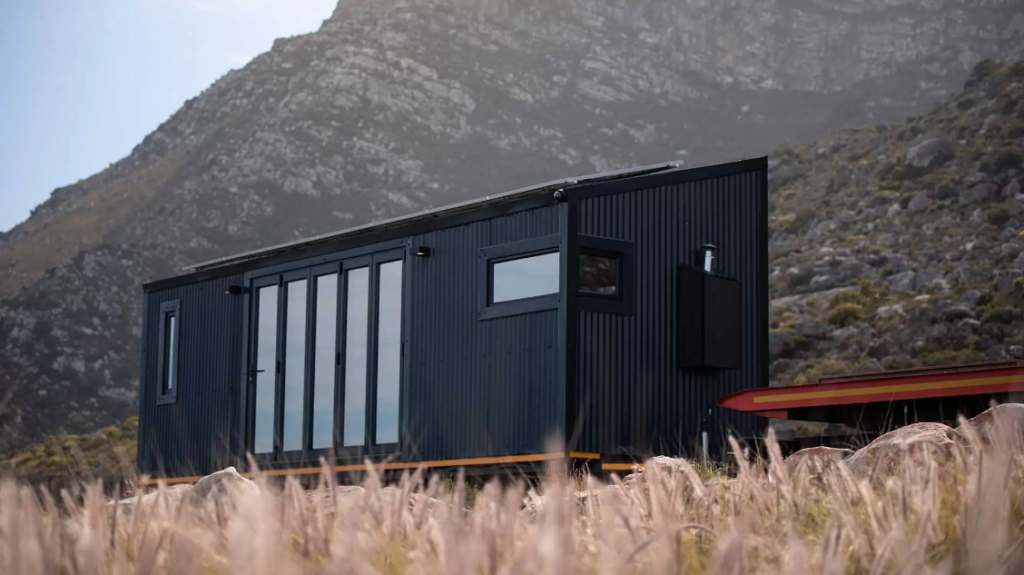Made in SA
Operation Modular
South Africa, like many other nations around the globe, is facing a massive housing crisis as it tries to deal with the challenge of providing all citizens with access to suitable or adequate housing. The country needs to build several million more homes in the next few years if the government is to meet its target of providing affordable housing for 12.5 million citizens by 2030.
Many ideas have been mooted to help overcome this housing challenge, and innovation clearly is key to solving the problem. One idea the conversation keeps coming back to is modular and prefabricated edifices.
The need for prefab
Housing is a basic human need and prefabricated buildings provide rapid infrastructure, creating an opportunity to help fill this important gap, notes Roberto Campos, COO at prefabricated and modular building manufacturer KwikSpace. “It saves time, as such buildings are much faster to build than traditional brick-and-mortar constructions. Furthermore, the components are built in a factory, so there are no inclement weather delays or similar external impacting factors as on traditional construction sites.”
In addition, says Campos, the factory environment provides quality assurance. “Components can be checked at various hold points, while such constructions are cheaper to build when compared to brick and mortar.”
He adds that this building method also produces lower waste and has less of an environmental impact than a standard construction site. Nevertheless, although they are prefabricated, these buildings have a 20-year-plus lifespan.
Yulande Roxburgh, CEO and founder of TinyHome Africa, says prefab units are manufactured in a controlled factory environment and designed to withstand movement and delivery to the site, allowing for mass production and one-day delivery with minimum disturbance to the environment.
“We have noted the popularity of light, steel-frame construction, which can be attributed to the seamless interface between computer-based design systems and manufacturing processes,” says Roxburgh. “When compared to conventional construction methods, light steel frames offer several advantages, including cost, building speed, quality,and durability. It is up to 50 per cent lighter than a wooden frame with no labour-intensive bricklaying or wood packing, panelling or straightening required.”
Roxburgh adds that light steel is a green building method. “More than 95 per cent of the water used in the steel-making process is recycled and returned.
Every piece of steel used in our constructions contains recycled content.”
So where’s the challenge?
Justin Anley, a director at modular developers WolfPack, points out that shifting to modular or prefabricated buildings takes a mindset change with which many South Africans struggle. He says many people who received such housing through the Reconstruction and Development Programme (RDP) complained that it was not a brick-and-mortar construction. “This mindset suggests this method is inferior to standard building methods. However, if one looks at Scandinavia, something like 80 per cent of their houses are constructed in this manner.
“Our company is based locally, but our main market is the international arena. I still find it amazing that we are offering low- and medium-range solutions for housing that are simply not accepted by the local market, yet we are exporting these same solutions to developed markets with very high construction and building standards.”
Anley notes that one of the major local challenges remains that, at least in the RDP instances, there are tenders for such projects. The issue he highlights is that with tenders, winning is a price-related game, meaning that bidders are tempted to cut corners. This means construction may not be up to standard, leading to failures in buildings and ultimately giving the industry a bad name.
“Another issue around the price point is that although developers may be able to save around 20 per cent of their costs by going prefab, there is the risk of little uptake of their development, due to the perception that this method is cheap and of low quality.”
Anley says it is worth noting that the risk analysis for a developer is much better in other parts of Africa. “This is because it is usually a partnership, where government supplies land to the developer, who puts in the modular housing. Should there not be uptake, it is then possible for government to allocate a different parcel of land, and the entire development can be moved there instead.”
Campos suggests another negative perception is around whether or not these buildings are properly weather- and climate-proof. He says that while they are built to withstand the African climate, specification and accreditation are key. “Remember that there are many different types of systems available in South Africa that offer cost and speed benefits, but are not necessarily suited for this type of application. It is important to have the correct system that will provide you with the required thermal insulation, structural strength, stability, fire rating, durability, acoustic performance, and quality. These systems are certified by either a registered engineer or via an Agrément certificate.” He adds that prefab buildings, while considered secure enough, also have the option to install burglar bars, security gates and alarm systems.
Roxburgh believes the real challenge is that we need government to come on board to create the right zoning for these types of homes. “This has been one of the primary obstacles for potential tiny homeowners. Once that hurdle has been removed, many people will be able to afford their lifestyle in quality smaller homes.”
Manufacturing and job creation
Roxburgh adds that removing the zoning hurdle will positively impact the industry and job creation. “With more manufacture of smaller homes, large factories can be set up to assemble and build prefab homes that can be transported by truck, or built in sections for site assembly. Additionally, cabinetmakers, tilers and builders can be trained to meet quality levels and gain skills to earn higher incomes.”
Campos says there are several locally manufactured products and manufacturers. “For example, we manufacture our own wall and ceiling panels and fabricate our own chassis. We see the development of this market as an opportunity to create growth in the manufacturing sector and across the value chain, such as through the procurement of steel, paint and other consumables from local suppliers.”
Campos adds that manufacturing prefabricated buildings is labour-intensive.
“The ramp-up required to fulfil the numbers would ensure a high number of jobs created, along with the opportunity to upskill existing workers.”
Campos notes that prefabricated buildings can provide solutions across many applications other than housing. “For example, we still have children learning in inappropriate structures or under trees, and patients standing in queues for hours due to a shortage of clinics. Prefabricated and modular buildings offer the opportunity to provide a solution that is much quicker to build, but still provides the benefits of a brick-and-mortar construction.”





